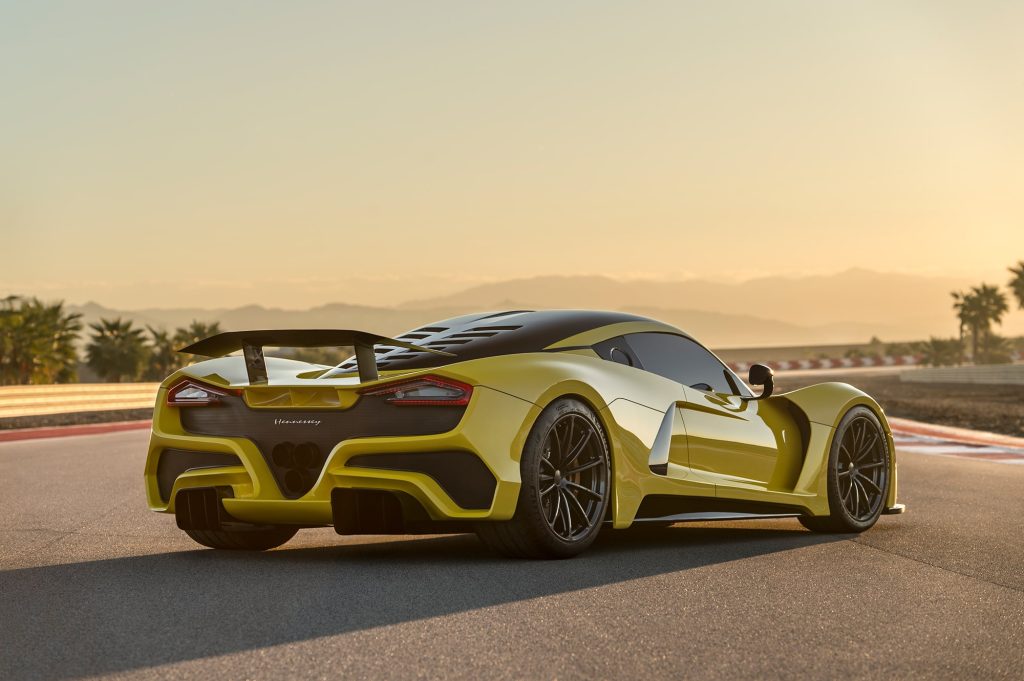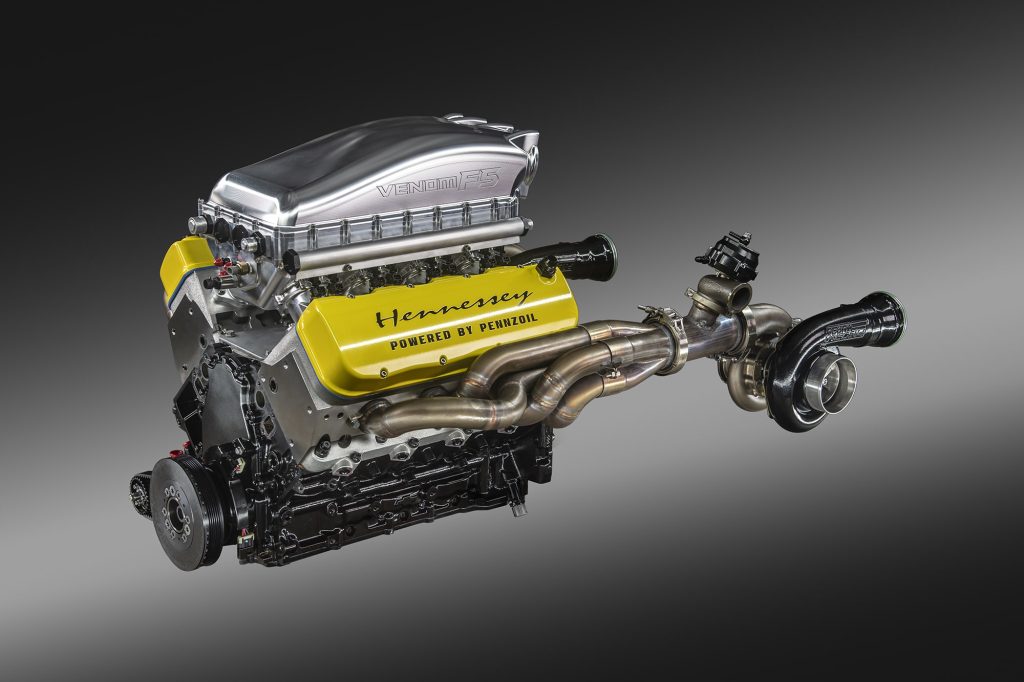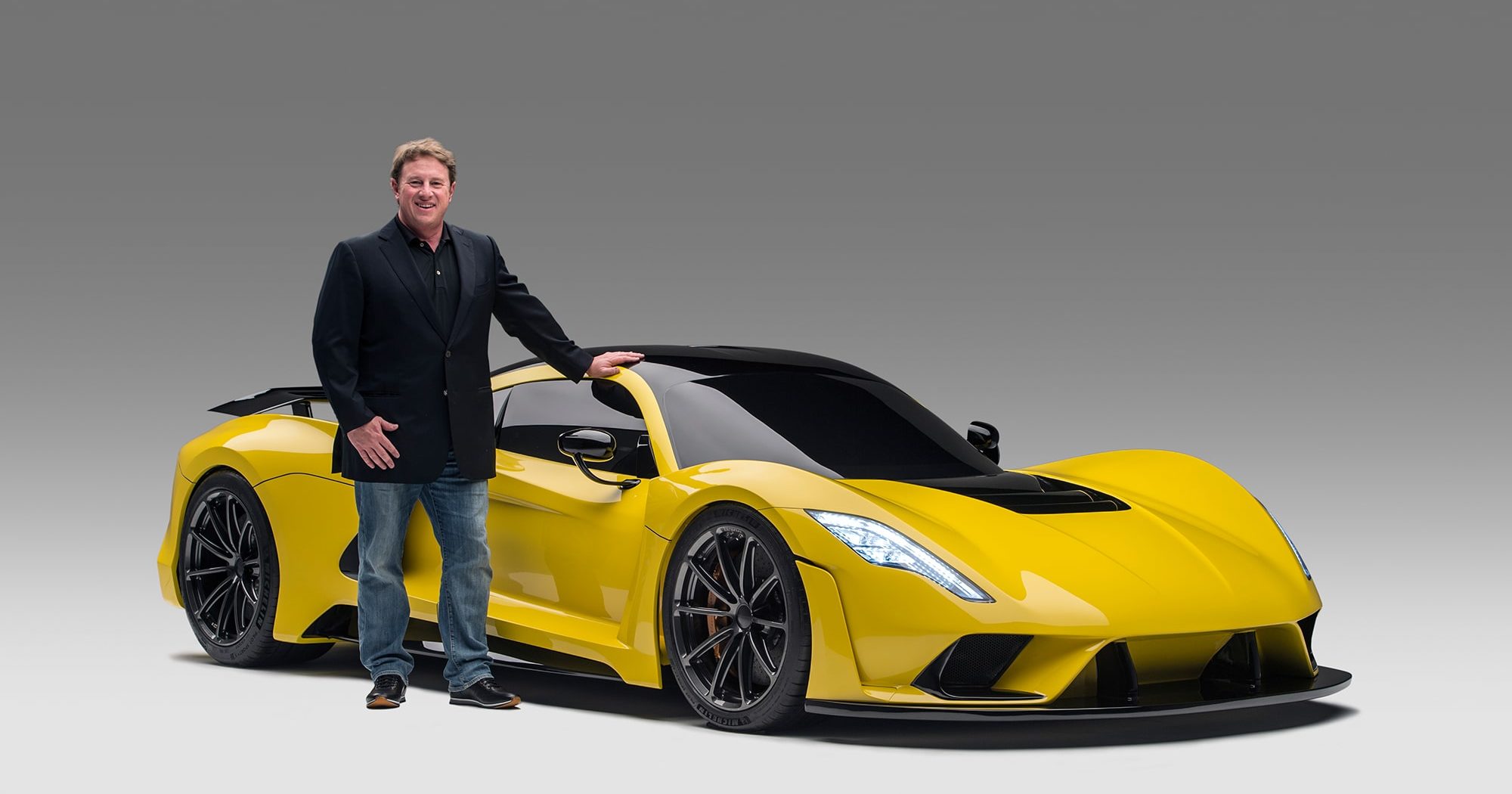From American Graffiti to The Fast and the Furious, street-fighting custom cars still seize the American imagination, along with their share of a $300 billion annual business in the North American automotive aftermarket. John Hennessey has grabbed his share as well: Over three decades, Hennessey has gone from building hot rods out of a Houston apartment to become one of America’s leading builders of superpowered, over-the-top rides. He’s sold more than 10,000 cars from his Hennessey Performance Engineering shop in Sealy, Texas, from the twin-turbocharged Dodge Vipers that first brought him notoriety, to his latest: an insane, 1,200-horsepower Chevrolet Camaro ZL-1 called the Resurrection.

Then there’s the Venom F5. It’s a $1.6 million fantasy, a roughly 1,800 horsepower, twin-turbo V-8 street car that’s faster than a Formula One racer. How fast? Hennessey is on a mission to break the mythical 300-mph barrier with the Venom, and to top the 304-mph record set by the $3 million Bugatti Chiron. Now he just needs a place to attempt it, as he explained in a phone interview: Even Kennedy Space Center’s mothballed, 2.8-mile Space Shuttle runway isn’t long enough to let the Venom reach its projected 311-mph top speed and brake back to a stop.

“Ideally, we need a nice, flat, straight section of Texas highway, that the state might help us close for 30 minutes,” Hennessey tells me. “But Bugatti did us two favors. They showed that proper road tires can go over 300 mph. And they reached 304 mph, so we know the number we have to beat.”
Those feats have made Hennessey the most famous Texan in automobiles since the late Carroll Shelby, the racer, car designer—and yes, chicken farmer—whose historic takedown of Ferrari at LeMans is memorialized on screen in Ford v. Ferrari.
“One hundred years from now, when I’m dead and gone, the Venom F5 is our attempt at the automotive Mona Lisa,” he says, though La Gioconda’s smile would definitely be wider after taking a spin.
Not bad for a guy who started off piloting his own daily driver to races and events in 1991. Hennessey modified that humble Mitsubishi 3000GT to do 177 mph, set a world record in his class at the Bonneville Salt Flats, then drove home in the very same car.
These days, Hennessey’s speed-obsessed customers range from billionaire entrepreneurs to Aerosmith’s Steven Tyler. But as ever, people who commute in Toyota Priuses—or get nervous when they’re driving 10 mph over the speed limit—have a hard time grasping why anyone would want a car that fast, or would spend six or seven figures to get one.

Explaining that addictive need for speed, Hennessey acknowledges that one-upmanship and bragging rights come into play. But he says people also respond to cars with great backstories, notable design, tech and of course, rarity. For the Venom, which Hennessey plans to limit to 26 copies, “the customer won’t have to go 300 mph to know it’s the most exciting experience you can have on four wheels.”
Choose the right collector car, Hennessey adds, and adrenaline isn’t the only thing that’s spiking. He recalls a customer who owned McLaren’s fabled F1 of the early nineties, boasting after he sold the $1 million supercar for $2 million—until the car shot up in value to today’s $17 million to $20 million.
“Now he looks at it like he lost $17 million,” Hennessey says with a laugh.

One Venom buyer, a huge car collector, considers automobiles as part of his investment portfolio, creating an index of values that he closely monitors.
“His cars were up 11 percent in 2018,” Hennessey says. “And you can’t drive a stock or a mutual fund, so it’s that much better.”
With Hennessey epitomizing the old-school “car guy,” with gasoline in his veins, you might think he’d scoff at electric cars. You’d be wrong.
“Electric and hybrid power are nothing but a good thing for the performance market,” he says. His company is actively researching creation of its own electrified monsters, though he says the technology and the charging infrastructure still have a way to go.
“We’re very interested, but we’ve basically been waiting for batteries to weigh half what they do now, and to go twice as far.”
His still-growing company now counts 40 employees and is in the midst of a 15,000-square-foot expansion to build the Venom. And after 28 years in a ruthless business—in which upstart car companies fail more often than not—Hennessey says he’s grown as well.
“My own failure as a leader was to think I had to do and control everything,” Hennessey says. “It’s hard to relinquish that control and fully trust people. But I’ve learned that the more I can let go and count on my team to do things, the more successful we’ll be.”
Hennessey says he’s taken critical leadership lessons from meeting Alan Mulally, the renowned former chief executive at Boeing and later Ford Motor, and his own many successful customers, including Wisconsin’s biggest potato farmer.
“I use some of these guys as my own focus group,” he says. “They’re the best consultants that I could never afford to have.”






